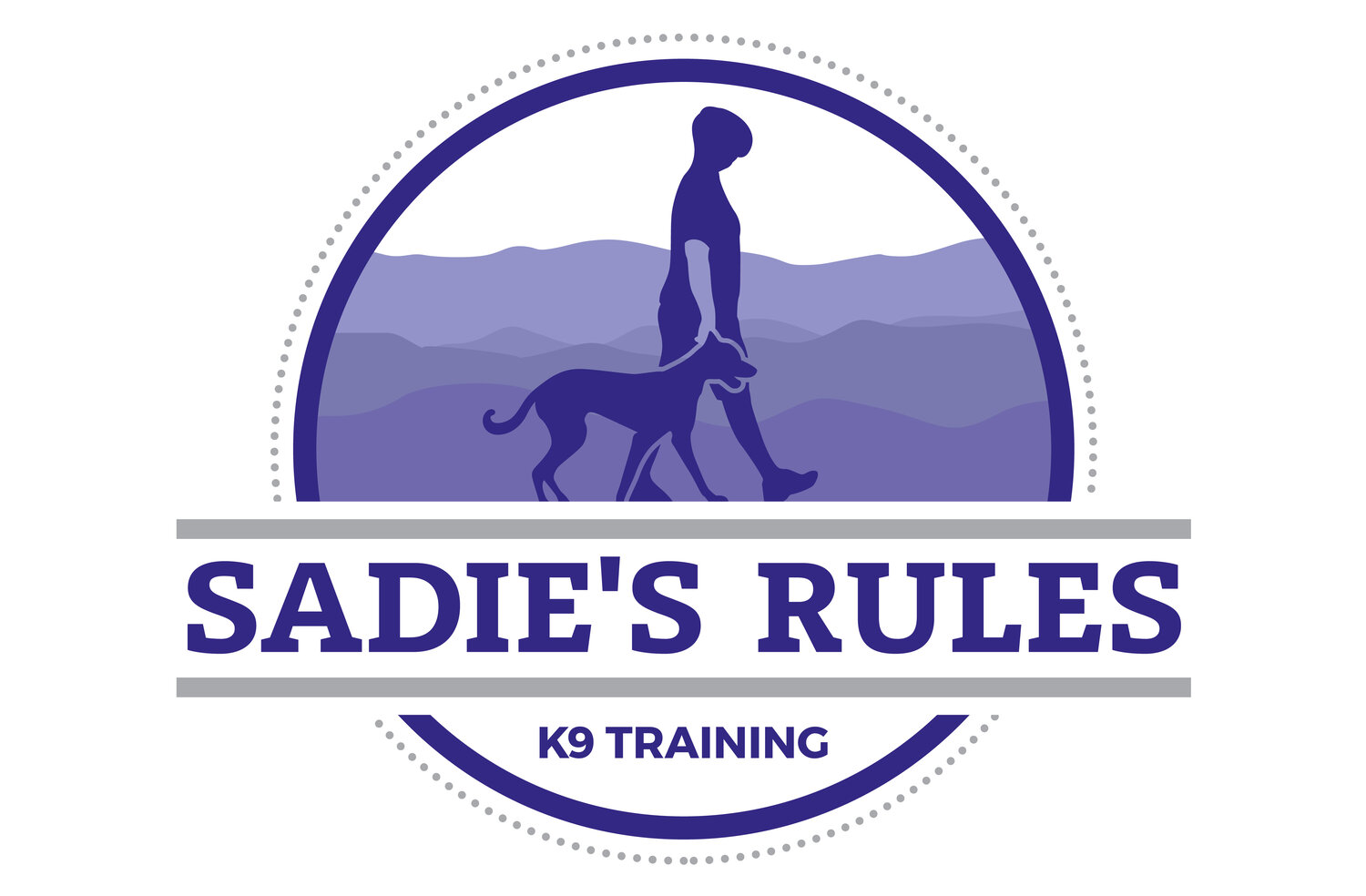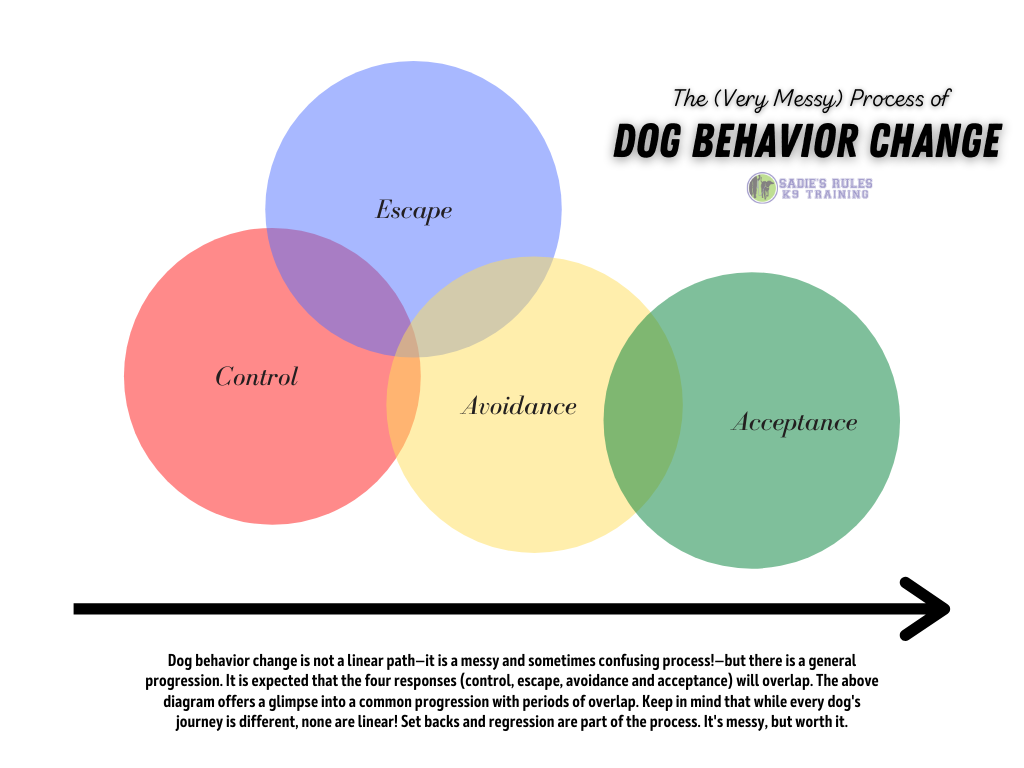There is a lot of clamor in the dog training community about avoidance. It’s usually painted in a negative light but I’d argue that it’s neither positive nor negative; it’s simply reflective of how a dog is feeling in a given moment. Avoidance is often part of the behavior change process, so it’s important not to demonize avoidance outright. This blog post will be dedicated to explaining what avoidance is and what purpose it serves in the context of changing dog behavior.
The process of dog behavior change
A dog trainer once explained to me that a dog has four ways to respond in any given moment: control, escape, avoid, or accept. The goal of behavior rehabilitation is to move the dog from control to acceptance but along the way, the dog often moves through phases of escape and avoidance. When we observe these responses, we learn a great deal about how a dog is progressing through our program. This photo is the perfect example of avoidance:
In the photo, you see an adorable lab puppy facing toward the camera and a larger dog facing away from the camera. The larger dog, Kodiak, is displaying avoidance. It’s not the camera he’s avoiding, it’s the puppy. (Yes, he’s avoiding a puppy!)
Kodiak, who is adoptable, came to us with a history of dog aggression and he was clearly uncomfortable around other dogs. His initial reaction was to control those moments with growling, barking, lunging, etc. While it’s understandable that Kodiak was uncomfortable around other dogs, his way of dealing with those feelings was inappropriate. Our job is to teach him how to accept the presence of other dogs—that’s what we’ve been working on. Along the way, we’ll likely see some escape and avoidance from him. Those are actually good signs in this context because it tells us that he understands that controlling the situation is no longer an option, and he is finding other ways to cope. These ways are safer and healthier, so I’m good with it—for now. We’ll continue moving him along the path toward acceptance but right now we’ll celebrate that he’s making better choices.
Escape vs Avoidance
I want to quickly clarify the difference between escape and avoidance and why avoidance is preferred. They are somewhat similar—they’re both ways of opting out of the given situation—but the difference is in the state of mind. An escape mentality is often one of panic and impulse, and on some level it’s also a way to control the situation (by escaping altogether). By contrast, an avoidance mentality is a calmer, more controlled response. It’s reflective of the dog’s choice to stay in a given situation (or accept that they cannot escape the situation) even if they aren’t ready to fully engage. State of mind is vital to behavior rehabilitation. When we see a dog attempt to escape a situation, we might acknowledge that it indicates a small measure of progress (since the dog is no longer making choices to control the situation) but we know we have a ways to go. Avoidance tells us we are much further along, even though we’re not at acceptance yet.
It’s a process—and it’s contextual, too
Kodiak has already had moments where he has accepted (and dare I say enjoyed!) the presence of some of my other dogs. However, this very young puppy has a very different energy than my balanced adult dogs. Puppy energy is a lot for some dogs and Kodiak is clearly telling us he is not ready to puppy! But he’s also not lunging at the puppy, nor is he trying to get away from the puppy. Avoiding the puppy is a great choice, and we’ll take it.
We will not leave Kodiak in avoidance forever. We will acknowledge that this is where he is while still continuing on the path toward acceptance. With strong leadership that both guides and advocates for him, clear and consistent communication, accountability and repetition, he will get there!


